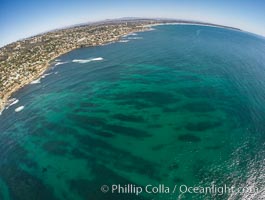
Lone African Elephant crossing dry lake bed, Amboseli National Park.
Species: African elephant, Loxodonta africana
Location: Amboseli National Park, Kenya
Image ID: 39579
Species: African elephant, Loxodonta africana
Location: Amboseli National Park, Kenya
Image ID: 39579

African Elephants, Large Herd Gathers at Sunset, Amboseli National Park.
Species: African elephant, Loxodonta africana
Location: Amboseli National Park, Kenya
Image ID: 39587
Panorama dimensions: 3743 x 8438
Species: African elephant, Loxodonta africana
Location: Amboseli National Park, Kenya
Image ID: 39587
Panorama dimensions: 3743 x 8438

A large herd of African elephants, composed of at least two familial groups, gathers at sunset to graze and socialize, Amboseli National Park.
Species: African elephant, Loxodonta africana
Location: Amboseli National Park, Kenya
Image ID: 39596
Species: African elephant, Loxodonta africana
Location: Amboseli National Park, Kenya
Image ID: 39596
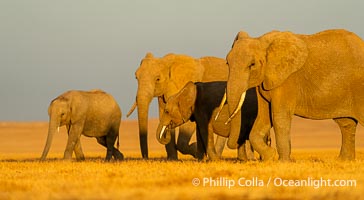
African elephant family with calves, sunrise, Amboseli National Park.
Species: African elephant, Loxodonta africana
Location: Amboseli National Park, Kenya
Image ID: 39553
Panorama dimensions: 4710 x 8577
Species: African elephant, Loxodonta africana
Location: Amboseli National Park, Kenya
Image ID: 39553
Panorama dimensions: 4710 x 8577

Solitary Adult African Elephant, grazing in field of grass, Amboseli National Park.
Species: African elephant, Loxodonta africana
Location: Amboseli National Park, Kenya
Image ID: 39561
Species: African elephant, Loxodonta africana
Location: Amboseli National Park, Kenya
Image ID: 39561
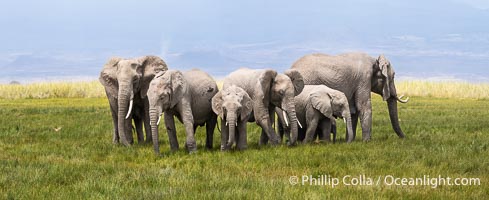
African elephants, Amboseli National Park.
Species: African elephant, Loxodonta africana
Location: Amboseli National Park, Kenya
Image ID: 39564
Panorama dimensions: 5441 x 13299
Species: African elephant, Loxodonta africana
Location: Amboseli National Park, Kenya
Image ID: 39564
Panorama dimensions: 5441 x 13299

Solitary African Elephant at Sunset, Amboseli National Park.
Species: African elephant, Loxodonta africana
Location: Amboseli National Park, Kenya
Image ID: 39568
Species: African elephant, Loxodonta africana
Location: Amboseli National Park, Kenya
Image ID: 39568
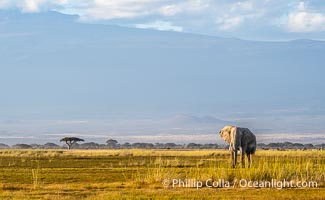
African elephant and Mount Kilimanjaro, Amboseli National Park.
Species: African elephant, Loxodonta africana
Location: Amboseli National Park, Kenya
Image ID: 39569
Panorama dimensions: 5272 x 8563
Species: African elephant, Loxodonta africana
Location: Amboseli National Park, Kenya
Image ID: 39569
Panorama dimensions: 5272 x 8563
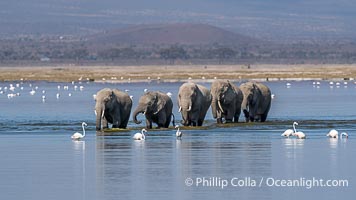
Elephant herd crossing Lake Kioko, Amboseli National Park.
Species: African elephant, Loxodonta africana
Location: Amboseli National Park, Kenya
Image ID: 39573
Species: African elephant, Loxodonta africana
Location: Amboseli National Park, Kenya
Image ID: 39573

Solitary African Elephant at Sunset, Amboseli National Park.
Species: African elephant, Loxodonta africana
Location: Amboseli National Park, Kenya
Image ID: 39582
Species: African elephant, Loxodonta africana
Location: Amboseli National Park, Kenya
Image ID: 39582
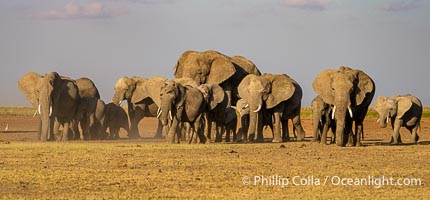
A large herd of African elephants, composed of at least two familial groups, gathers at sunset to graze and socialize, Amboseli National Park.
Species: African elephant, Loxodonta africana
Location: Amboseli National Park, Kenya
Image ID: 39589
Species: African elephant, Loxodonta africana
Location: Amboseli National Park, Kenya
Image ID: 39589
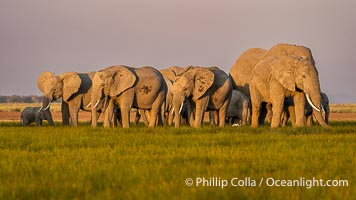
A large herd of African elephants, composed of at least two familial groups, gathers at sunset to graze and socialize, Amboseli National Park.
Species: African elephant, Loxodonta africana
Location: Amboseli National Park, Kenya
Image ID: 39593
Panorama dimensions: 4860 x 8640
Species: African elephant, Loxodonta africana
Location: Amboseli National Park, Kenya
Image ID: 39593
Panorama dimensions: 4860 x 8640

Lioness and Elephants in Marsh, Masai Mara, Kenya.
Species: African lion, Panthera leo
Location: Maasai Mara National Reserve, Kenya
Image ID: 39641
Panorama dimensions: 5760 x 8640
Species: African lion, Panthera leo
Location: Maasai Mara National Reserve, Kenya
Image ID: 39641
Panorama dimensions: 5760 x 8640

African Elephant Family at Sunrise, Mara North Conservancy, Kenya.
Species: African elephant, Loxodonta africana
Location: Mara North Conservancy, Kenya
Image ID: 39659
Species: African elephant, Loxodonta africana
Location: Mara North Conservancy, Kenya
Image ID: 39659
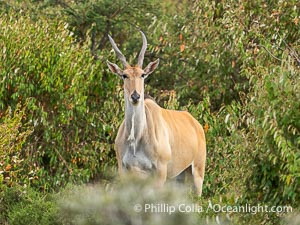
Common Eland or Eland Antelope, Taurotragus oryx, Greater Masai Mara, Kenya. The eland is the largest species of antelope in the world.
Species: Eland, Taurotragus oryx
Location: Mara North Conservancy, Kenya
Image ID: 39717
Species: Eland, Taurotragus oryx
Location: Mara North Conservancy, Kenya
Image ID: 39717
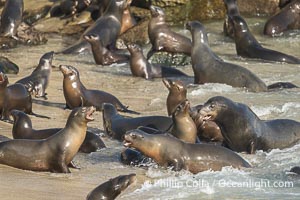
California Sea Lions in La Jolla Cove, these sea lions are seeking protection from large waves by staying in the protected La Jolla Cove.
Species: California sea lion, Zalophus californianus
Location: La Jolla, California
Image ID: 39796
Panorama dimensions: 5760 x 8640
Species: California sea lion, Zalophus californianus
Location: La Jolla, California
Image ID: 39796
Panorama dimensions: 5760 x 8640
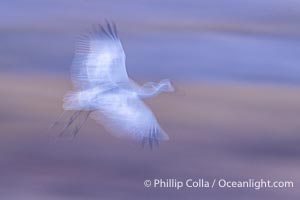
Sandhill cranes landing in water ponds at dusk, spending the night standing in water as a protection against coyotes and other predators. Motion blur.
Species: Sandhill Crane, Grus canadensis
Location: Bosque del Apache National Wildlife Refuge, Socorro, New Mexico
Image ID: 39947
Species: Sandhill Crane, Grus canadensis
Location: Bosque del Apache National Wildlife Refuge, Socorro, New Mexico
Image ID: 39947
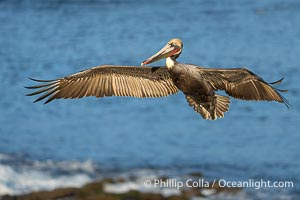
Brown pelican in flight. Adult winter breeding plumage. Brown pelicans were formerly an endangered species. In 1972, the United States Environmental Protection Agency banned the use of DDT in part to protect bird species like the brown pelican . Since that time, populations of pelicans have recovered and expanded. The recovery has been so successful that brown pelicans were taken off the endangered species list in 2009.
Species: Brown Pelican, Pelecanus occidentalis, Pelecanus occidentalis californicus
Location: La Jolla, California
Image ID: 40009
Species: Brown Pelican, Pelecanus occidentalis, Pelecanus occidentalis californicus
Location: La Jolla, California
Image ID: 40009

Brown pelican in flight. Adult winter breeding plumage. Brown pelicans were formerly an endangered species. In 1972, the United States Environmental Protection Agency banned the use of DDT in part to protect bird species like the brown pelican . Since that time, populations of pelicans have recovered and expanded. The recovery has been so successful that brown pelicans were taken off the endangered species list in 2009.
Species: Brown Pelican, Pelecanus occidentalis, Pelecanus occidentalis californicus
Location: La Jolla, California
Image ID: 40010
Species: Brown Pelican, Pelecanus occidentalis, Pelecanus occidentalis californicus
Location: La Jolla, California
Image ID: 40010

Portrait of a California brown pelican in winter breeding plumage, yellow head, red throat, pink skin around the eye, brown hind neck. Brown pelicans were formerly an endangered species. In 1972, the United States Environmental Protection Agency banned the use of DDT. Since that time, populations of pelicans have recovered and expanded. The recovery has been so successful that brown pelicans were taken off the endangered species list in 2009.
Species: Brown Pelican, Pelecanus occidentalis, Pelecanus occidentalis californicus
Location: La Jolla, California
Image ID: 40017
Species: Brown Pelican, Pelecanus occidentalis, Pelecanus occidentalis californicus
Location: La Jolla, California
Image ID: 40017
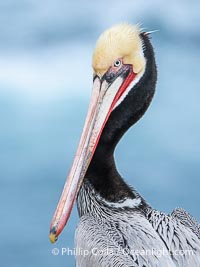
Portrait of a California brown pelican in winter breeding plumage, yellow head, red throat, pink skin around the eye, brown hind neck. Brown pelicans were formerly an endangered species. In 1972, the United States Environmental Protection Agency banned the use of DDT. Since that time, populations of pelicans have recovered and expanded. The recovery has been so successful that brown pelicans were taken off the endangered species list in 2009.
Species: Brown Pelican, Pelecanus occidentalis, Pelecanus occidentalis californicus
Location: La Jolla, California
Image ID: 40018
Species: Brown Pelican, Pelecanus occidentalis, Pelecanus occidentalis californicus
Location: La Jolla, California
Image ID: 40018
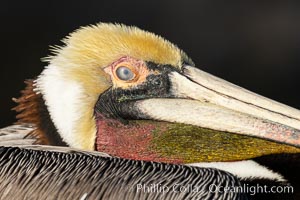
Brown pelican nictitating membrane, a translucent membrane that forms an inner eyelid in birds, reptiles, and some mammals. It can be drawn across the eye to protect it while diving in the ocean, from sand and dust and keep it moist.
Species: Brown Pelican, Pelecanus occidentalis, Pelecanus occidentalis californicus
Location: La Jolla, California
Image ID: 36718
Species: Brown Pelican, Pelecanus occidentalis, Pelecanus occidentalis californicus
Location: La Jolla, California
Image ID: 36718
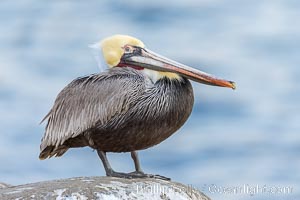
Brown pelican nictitating membrane, a translucent membrane that forms an inner eyelid in birds, reptiles, and some mammals. It can be drawn across the eye to protect it while diving in the ocean, from sand and dust and keep it moist.
Species: Brown Pelican, Pelecanus occidentalis, Pelecanus occidentalis californicus
Location: La Jolla, California
Image ID: 38601
Species: Brown Pelican, Pelecanus occidentalis, Pelecanus occidentalis californicus
Location: La Jolla, California
Image ID: 38601

Sandhill cranes landing in water ponds at dusk, spending the night standing in water as a protection against coyotes and other predators. Motion blur.
Species: Sandhill crane, Grus canadensis
Location: Bosque del Apache National Wildlife Refuge, Socorro, New Mexico
Image ID: 38734
Species: Sandhill crane, Grus canadensis
Location: Bosque del Apache National Wildlife Refuge, Socorro, New Mexico
Image ID: 38734
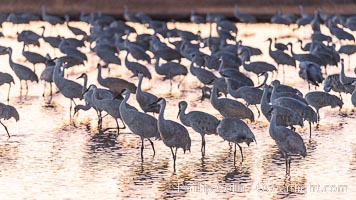
Sandhill cranes will spend the night in ponds as protection from coyotes and other predators. The pond is often frozen in the morning.
Species: Sandhill crane, Grus canadensis
Location: Bosque del Apache National Wildlife Refuge, Socorro, New Mexico
Image ID: 38745
Species: Sandhill crane, Grus canadensis
Location: Bosque del Apache National Wildlife Refuge, Socorro, New Mexico
Image ID: 38745
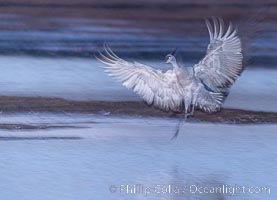
Sandhill cranes landing in water ponds at dusk, spending the night standing in water as a protection against coyotes and other predators. Motion blur.
Species: Sandhill crane, Grus canadensis
Location: Bosque del Apache National Wildlife Refuge, Socorro, New Mexico
Image ID: 38757
Species: Sandhill crane, Grus canadensis
Location: Bosque del Apache National Wildlife Refuge, Socorro, New Mexico
Image ID: 38757
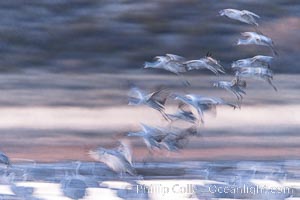
Sandhill cranes landing in water ponds at dusk, spending the night standing in water as a protection against coyotes and other predators. Motion blur.
Species: Sandhill crane, Grus canadensis
Location: Bosque del Apache National Wildlife Refuge, Socorro, New Mexico
Image ID: 38758
Species: Sandhill crane, Grus canadensis
Location: Bosque del Apache National Wildlife Refuge, Socorro, New Mexico
Image ID: 38758
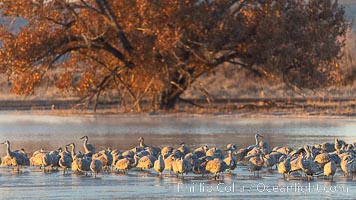
Sandhill cranes will spend the night in ponds as protection from coyotes and other predators. The pond is often frozen in the morning.
Species: Sandhill crane, Grus canadensis
Location: Bosque del Apache National Wildlife Refuge, Socorro, New Mexico
Image ID: 38759
Species: Sandhill crane, Grus canadensis
Location: Bosque del Apache National Wildlife Refuge, Socorro, New Mexico
Image ID: 38759
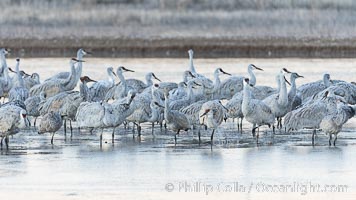
Sandhill cranes will spend the night in ponds as protection from coyotes and other predators. The pond is often frozen in the morning.
Species: Sandhill crane, Grus canadensis
Location: Bosque del Apache National Wildlife Refuge, Socorro, New Mexico
Image ID: 38760
Species: Sandhill crane, Grus canadensis
Location: Bosque del Apache National Wildlife Refuge, Socorro, New Mexico
Image ID: 38760
